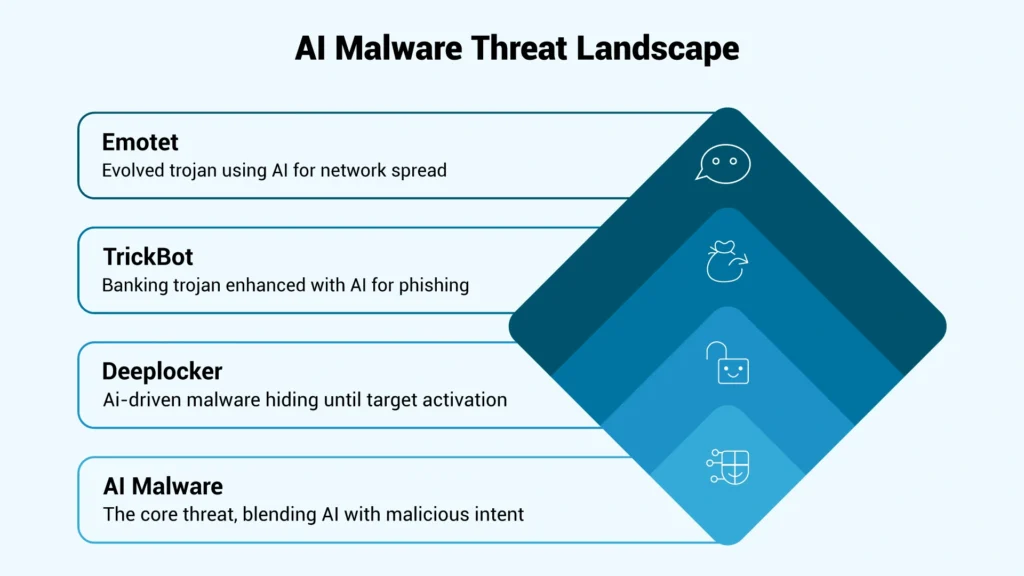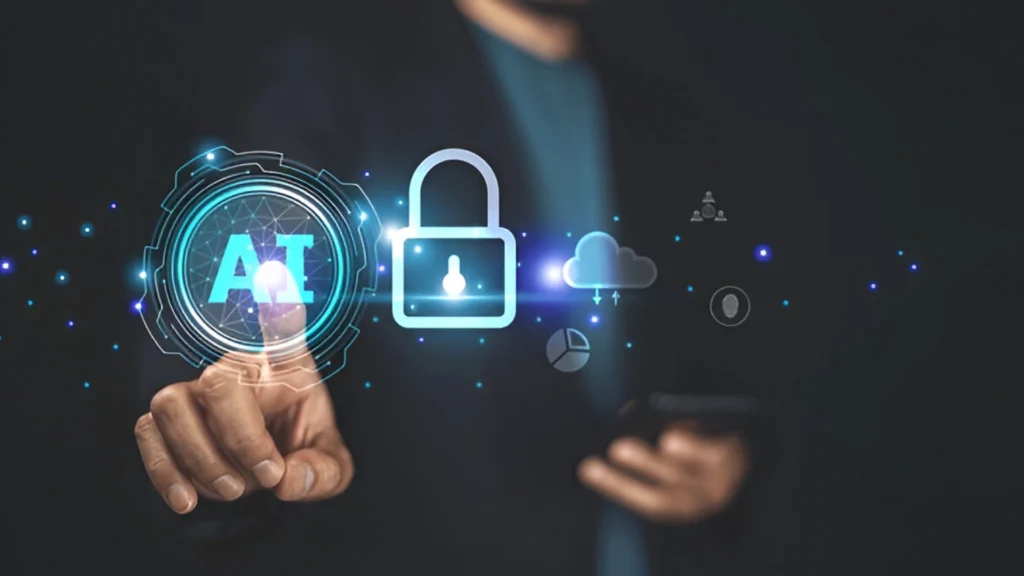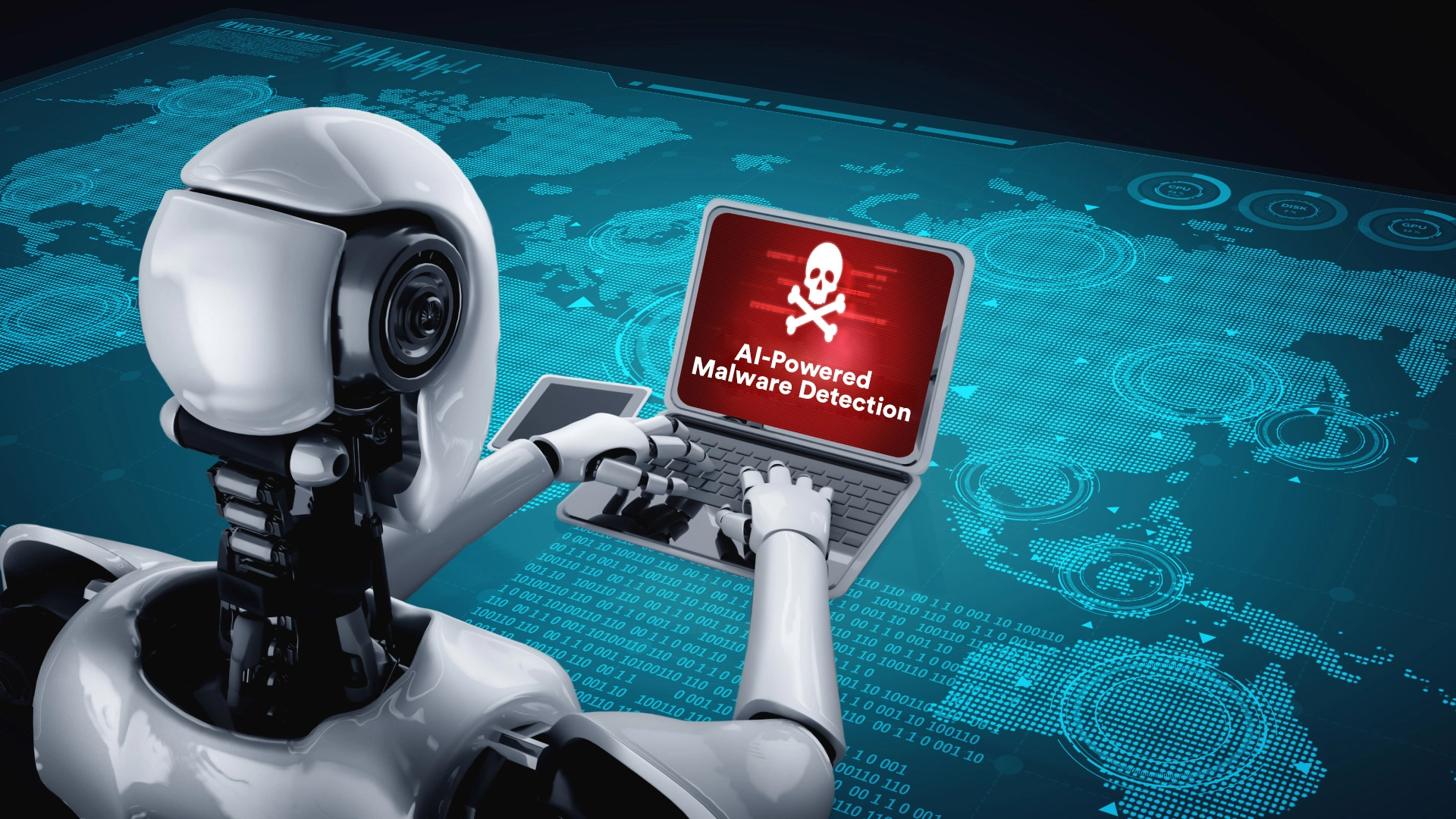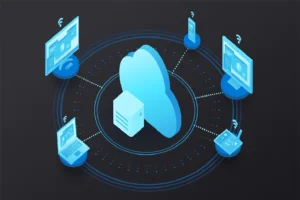In today’s digital age, cybersecurity is more important than ever. As we rely more and more on technology, bad actors are getting smarter. Traditional security tools like firewalls and antivirus software are no longer enough. This is where AI-powered malware detection comes in. With the help of artificial intelligence, cybersecurity systems are evolving and becoming more intelligent in identifying and stopping cyber threats before they cause damage.
In the past, malware used to be easy to spot and remove. Now, with the rise of AI generated malware, the game has completely changed. These new types of threats can learn, adapt, and even mimic normal behavior, making them much harder to detect using older tools. In this article, we’ll walk you through what AI-powered malware is, how it works, and what you can do to stay safe. We’ll also explore real-life examples, future trends, and the challenges we face with this new generation of cyber threats.
Let’s dive into the world of AI-powered malware detection and discover how we can stay one step ahead.
Key Characteristics of AI-Based Malware
To understand the threat, we need to first understand what makes AI-generated malware so different from traditional malware. Traditional malware is written with specific instructions. Once those instructions are identified, antivirus tools can recognize and block it. But AI-based malware is much more advanced.

One key feature is adaptability. AI-generated malware can analyze the environment it’s in and change its behavior based on that. For example, it might act harmless when it detects that it’s being watched by security software, only to unleash its attack later. This makes it extremely sneaky.
Another feature is automation. Instead of being manually coded line by line, AI-generated malware can write parts of itself, find vulnerabilities on its own, and even decide the best way to spread. It’s like giving the malware a brain of its own.
AI also gives malware the ability to hide in plain sight. It can blend into normal files, copy regular user behavior, and avoid raising red flags. In short, AI-based malware is smarter, faster, and harder to catch.
These features make AI-powered threats a serious concern for both individuals and businesses. The better we understand these characteristics, the more prepared we are to defend against them.
Types of AI-Driven Malware Attacks
Let’s take a deeper look at the threats we’re dealing with in today’s digital world. An AI malware attack doesn’t follow the same rules as traditional malware. Instead of just relying on pre-written code, these new threats use artificial intelligence to make their attacks more targeted, more efficient, and much harder to detect. AI helps malware become smarter—learning from its surroundings, adjusting its tactics, and even hiding in plain sight. So, what are the main types of malware now being powered by AI?
One major type is polymorphic malware. This malware is like a chameleon—it constantly changes its code to avoid being recognized. Traditional antivirus software usually looks for specific patterns or “signatures” to detect threats. But polymorphic malware rewrites itself every time it infects a new system. With AI, it can now do this faster, more often, and more cleverly. Imagine a virus that never looks the same twice—that’s what makes this type so dangerous.
Next up is ransomware. We’ve all heard about it: malicious software that locks your files and demands payment to get them back. But now, with the help of AI, ransomware has become more sophisticated. AI-driven ransomware doesn’t just randomly lock files—it carefully chooses which ones are most valuable, based on user behavior. It can also decide how much ransom to demand, making it more likely that the victim will pay. For businesses, this type of attack can be devastating.
Phishing attacks have also gotten an upgrade. With AI, hackers can create fake emails that are nearly impossible to tell apart from real ones. They might look like messages from your boss, your bank, or even a close friend. AI tools can scrape your social media and other public info to make the message feel personal and trustworthy. This makes it much easier to trick people into clicking malicious links or sharing sensitive data.
And then there are botnets. A botnet is a network of infected computers that work together to carry out attacks. AI-powered botnets are better at coordinating attacks and hiding their activity. They can figure out the best time to launch an attack and how to stay under the radar for longer periods.
In short, an AI malware attack is no longer just about spreading viruses—it’s about using intelligence to attack with precision. The more we understand these evolving threats, the better we can prepare to defend against them.
Real-Life Examples of AI-Driven Malware in Action
AI malware is no longer just a theory or a concern for the future. It’s already here, and there are several examples of it in the wild. These real-world cases show just how powerful and dangerous AI-driven malware can be.

One famous example is DeepLocker. Developed as a proof of concept by IBM, this malware used AI to hide its real purpose until it reached a specific target. It was able to use facial recognition and other data to figure out when to activate. Until that point, it behaved like a normal program, completely invisible to antivirus software.
Another case involved TrickBot, a well-known banking trojan that added AI components to improve its success rate. It learned which users were more likely to fall for phishing, which accounts had more money, and how to avoid getting caught. Over time, it became more effective and more dangerous.
Then there’s Emotet, which started as a simple banking trojan but evolved into a full-blown AI-powered malware network. It used machine learning to change how it spread, who it targeted, and how it stayed hidden. It was so effective that even major cybersecurity companies struggled to stop it.
These examples show that AI malware is not just smarter—it’s harder to detect, harder to stop, and often much more damaging than traditional threats. It’s not science fiction; it’s already affecting real people and companies around the world.
AI-Powered Malware Detection: How It Works
So how do we fight back against all these smart, AI-powered threats? The answer lies in using artificial intelligence for good. That’s exactly what AI-powered malware detection is all about. Just as hackers are using AI to make malware more dangerous, cybersecurity experts are using AI to build smarter, stronger defense systems. But how does this process actually work?
In simple terms, AI-powered malware detection uses machine learning and deep learning to study massive amounts of data. Traditional antivirus tools work by checking files against a database of known threats. If a virus or malware matches something in the list, it gets blocked. But what happens when the malware is brand new or changes its code to avoid detection? That’s where AI comes in.
Instead of only looking for known threats, AI looks at behavior. It watches how programs act, how files move, how people interact with systems. It asks questions like: Is this software trying to access parts of the system it shouldn’t? Is this email pretending to be from someone it’s not? Is this device behaving strangely compared to its usual patterns?
The more examples the AI sees, the better it becomes at recognizing what’s normal and what’s suspicious. Over time, it builds a profile of typical behavior for different devices, users, and networks. Anything that falls outside of that “normal” range gets flagged as a potential threat.
One of the most powerful features of AI-based detection is automation. These systems can analyze threats in real-time without needing a person to step in. If a file looks dangerous, the AI can isolate it instantly, stop it from spreading, and alert the cybersecurity team. This kind of speed and accuracy simply wasn’t possible before.
On top of that, AI can even detect new types of malware that no one has seen before. Since it’s not relying on outdated definitions or signatures, it’s always learning and adapting. It can even help predict future attacks by identifying patterns and weak points in a system.
Understanding how malware works and how AI helps detect and stop it is key to building stronger defenses. AI-powered malware detection is quickly becoming one of the most valuable tools in the fight against modern cyber threats.
Defensive Measures and Best Practices
Of course, even the best AI systems can’t do everything alone. As users, we also need to take smart steps to protect ourselves. Here are some practical malware analysis tips and best practices that anyone can follow.

First, keep everything updated. This includes your operating system, software, and antivirus tools. Updates often include patches that fix known vulnerabilities. If you delay updates, you leave the door open for malware to get in.
Second, don’t click on links or download attachments from unknown sources. Even if an email looks real, take a moment to double-check. AI-generated phishing emails can be very convincing, but a little caution can go a long way.
Third, use strong passwords and two-factor authentication. Many attacks happen because people use weak or repeated passwords. Make it harder for hackers to break in.
Fourth, back up your files regularly. If ransomware ever gets through, you’ll be glad you have a safe copy of your important data.
Lastly, consider investing in modern cyber security tools that use AI-powered malware detection. These tools are designed to spot threats that older systems can’t.
By combining smart tools with smart habits, you can build a strong defense against even the most advanced threats.
Ethical and Technical Challenges
As powerful as AI is, it’s not without problems. When it comes to malware analysis challenges, there are both technical and ethical issues to think about.
On the technical side, one challenge is false positives. AI can sometimes flag normal behavior as suspicious. This can lead to unnecessary panic or even disruptions if a clean file gets blocked. It takes time to train systems properly and avoid these errors.
Another issue is data. AI systems need a lot of data to learn, and that raises privacy concerns. If too much personal data is collected, it can be misused or exposed in a breach.
There’s also the risk of arms races. As defenders use AI, attackers improve their AI too. It becomes a constant back-and-forth, with each side trying to outsmart the other.
Ethically, there are questions about who’s responsible when AI makes a mistake. If an AI-powered system allows a cyberattack to happen, who’s to blame? The developer? The user? The company?
There’s also a risk of bias. If an AI system is trained on biased data, it may make unfair decisions—like targeting certain users or missing threats in other groups.
Addressing these challenges requires a mix of smart technology, careful planning, and ongoing monitoring. We can’t just rely on AI blindly. We need to guide it responsibly.
Future Trends in AI and Cybersecurity
Looking ahead, what does the future of malware and cybersecurity look like? One thing is clear: AI will play an even bigger role.
On the attack side, we can expect malware to become more personalized and even harder to detect. Future AI malware might use voice imitation, deepfakes, or even virtual reality to trick users. It could learn from every failed attempt and improve in real-time.

On the defense side, we’ll see more AI working behind the scenes in operating systems, browsers, and apps. These systems will be able to stop threats without the user even knowing it. AI might also help law enforcement catch cybercriminals by analyzing patterns and connections faster than any human could.
We’ll also see more collaboration between governments, tech companies, and security firms. Fighting AI threats will require teamwork on a global scale. There will be more regulations, more ethical guidelines, and hopefully, more education for the public.
The future of malware is full of both risks and opportunities. But with the right tools and knowledge, we can stay ahead.
Conclusion
The rise of AI-powered malware detection marks a new era in cybersecurity. As hackers use AI to create smarter and sneakier threats, defenders must also use AI to fight back. This digital arms race is constantly evolving, and it affects everyone—from large corporations to everyday users like you and me.
We’ve looked at what makes AI-generated malware different, the types of attacks to watch for, real-world examples of damage, and how AI is changing the game in detection and defense. We’ve also talked about best practices, challenges, and what the future may hold.
The key takeaway? Stay informed, stay alert, and stay updated. As powerful as AI is, the human element—your choices, your habits, your awareness—still plays a crucial role.
Let’s use technology not just to fight threats, but to build a safer digital world together.










